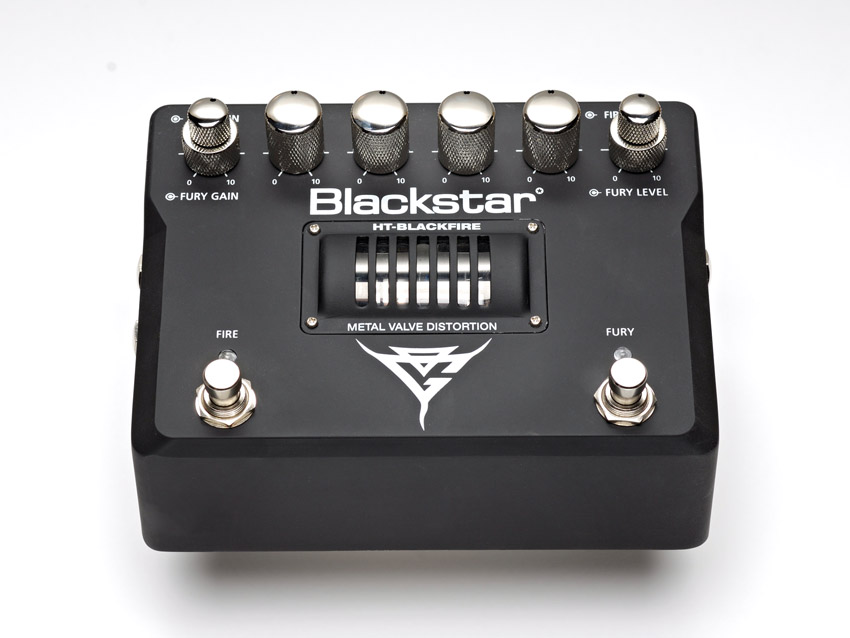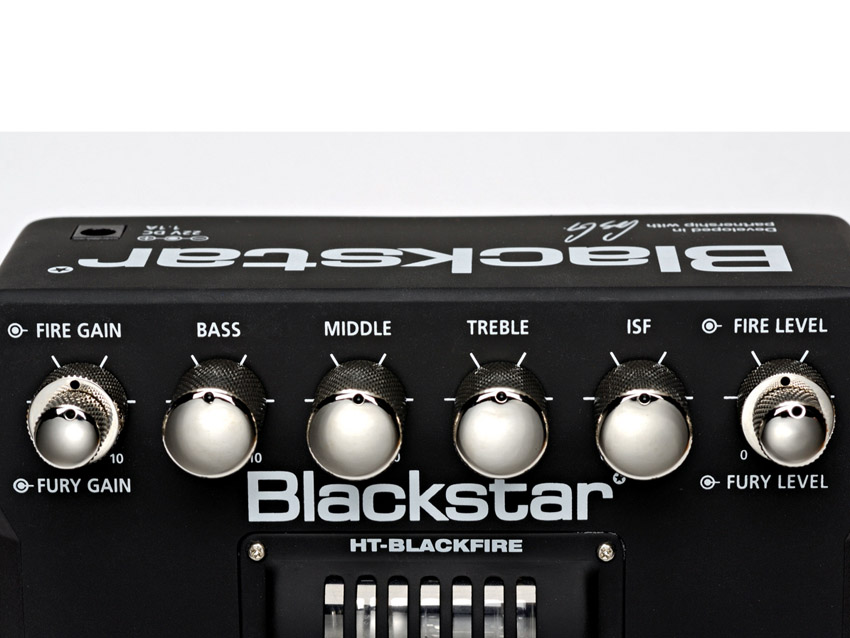MusicRadar Verdict
At £199, it's a pretty serious purchase, but with two channels of convincing valve tones, pro build quality, tonal flexibility via the ISF control, and that handy emulated output, this is a viable option for any rig that's in need of a sonic power-up.
Pros
- +
Valve metal tones on tap.
Cons
- -
Might not be extreme enough for some.
MusicRadar's got your back

Blackstar HT-Blackfire

Blackstar HT-Blackfire
Blackstar's latest all-valve distortion pedal is its first ever artist signature product. It's limited to 1,000 units and co-developed with Gus G, who wields his fretboard magic with Firewind and Ozzy Osbourne.
"I wanted to create something that had both my rhythm and lead sound in one box," says Gus, and thus there are two channels: Fire, "an ultraheavy metal high-gain sound", and Fury, "perfect for leads".
"The Fire channel showcases sterling heavy metal, while the Fury channel is tighter, brighter and more modern."
Firewind fans will have spotted the crafty reference to the band's tune, The Fire And The Fury, and the signed certificate and trading card provide further thrills.
The HT-Blackfire is similar to Blackstar's HT-Dual, with a visible ECC83 valve running at 300 volts. There's no clean option, but the tone is hotter and the finish is a sexy black rubberised affair. Mmm.
The Fire and Fury channels have independent gain and level control on stacked pots. Shared between both channels are amp-style tone controls and the ISF (Infinite Shape Feature) knob.
With ISF to the left, you can expect a scooped, aggressive 'US' sound, and turning it up morphs it into a warm 'British' tone with fuller mids. It's similar to the contour control found on some amps/pedals.
The Fire channel showcases a sterling heavy metal sound, with a ballsy yet articulate tone. High-output pickups milk the best tone from this channel; it really sings when the gain is cranked.
Switch to the Fury channel and the sound is tighter, brighter and more modern - you're unlikely to max out the gain knob here. There's a great response to picking dynamics that's typical of valve gear, with pick attack biting through nicely.
Switching pickups makes an appreciable difference, unlike with some pedals where the results are homogeneous (though not always undesirable).
The pedal also provides a decent-sounding emulated speaker output for running directly into a PA or recording device. In some situations, it could well give more useful results than mic'ing, and the regular output can be used alongside it.
This pedal excels at no-nonsense, tried-and-true distortion tones. While its focus is on the more traditional end of heavy metal, it can handle most metal subgenres (but may not satisfy those seeking over-the-top brutality and compressed-to-death consistency).
“We were arguing a lot and we were miserable”: How Green Day exceeded expectations with their most ambitious song
"There’s plenty for us guitarists to learn – and ‘less is more’ is the overriding lesson": how to play like George Harrison on The Beatles' Abbey Road
“They didn’t like Prince’s bikini underwear”: Prince’s support sets for the The Rolling Stones in 1981 are remembered as disastrous, but guitarist Dez Dickerson says that the the crowd reaction wasn’t as bad as people think









